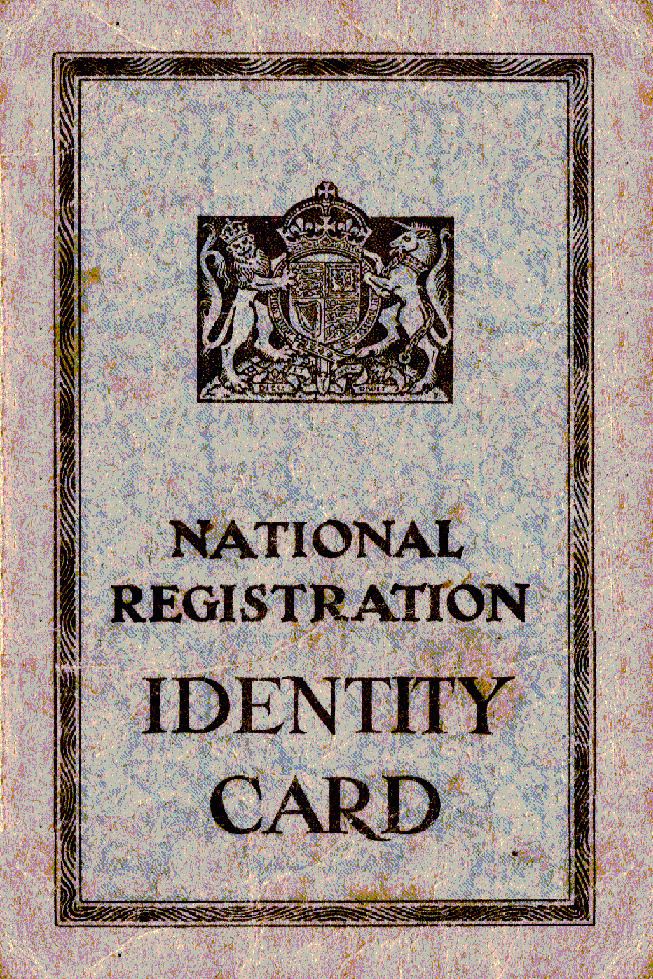 | ||
The National Registration Act 1939 (2 & 3 Geo. VI c. 91) was an Act of Parliament in the United Kingdom. The initial National Registration Bill was introduced to Parliament as an emergency measure at the start of World War II. Royal assent given on 5 September 1939.
Contents
- World War 2 Identity Cards
- 1943 Blue Identity Card
- Class Codes
- Repeal of the Act
- Access to information
- References
The Act established a National Register which began operating on 29 September 1939 (National Registration Day), a system of identity cards, and a requirement that they must be produced on demand or presented to a police station within 48 hours.
World War 2 Identity Cards
Every man, woman and child had to carry an identity (ID) card at all times and the cards would include the following information:
65,000 enumerators across the country delivered forms ahead of the chosen day. On 29 September 1939, householders were required to record details on the registration forms. On the following Sunday and Monday the enumerators visited every householder, checked the form and there and then issued a completed identity card for each of the residents. All cards at this time were the same brown/buff colour.
Three main reasons for their introduction:
1943 (Blue) Identity Card
The more commonly found blue version of the identity card (see image) was issued in 1943 for adults. Until then, adult identity cards had been brown, the same colour as children's cards. Government officials had green ID cards with a photograph whilst those in the armed services had separate identification cards.
Children under 16 were issued with Identity Cards but they were to be kept by their parents. Identification was necessary if families got separated from one another or their house was bombed, and if people were injured or killed.
The sections in the card showing the change in address were important, as many people moved several times during the war.
Class Codes
Class Codes were used for administration and electoral purposes. Cards were marked A, B, C, N or V.
Additionally, all class code 'B' cards were followed by three numbers. The first two indicated the year in which the holder was born whilst the third indicated which quarter of the year the holder was born in. For example, B. 252 would show that the holder was born in the second quarter of 1925 and would also indicate to a polling clerk that the holder would attain adult status in the second quarter of 1946 (i.e. reach the age of 21).
Temporary buff cards were issued to children under 16 but did not carry a class code.
Repeal of the Act
On 21 February 1952, it no longer became necessary to carry an identity card. The National Registration Act of 1939 was repealed on 22 May 1952. The last person prosecuted under the Act was Clarence Henry Willcock.
Access to information
The records created under the National Registration Act are held by The National Archives but were not for many years freely accessible to the public. From 2010, subject to restrictions to safeguard the privacy of people who are or may still be living, information could be obtained from the NHS Information Centre about specific individuals for a fee. The National Archives has now entered into an agreement under which the original documents have been digitised scanned and are available (subject to privacy restrictions) on the subsrciption-based Findmypast website, although they can also be viewed for free in person at the National Archives in Kew.
